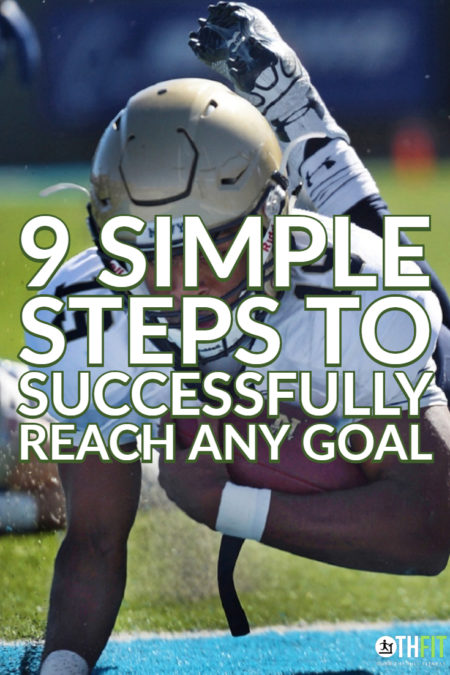
Mindfulness Meditation For Inner Peace
Our modern world is loud, busy, and stressful. It seems like everyone I know is tired and overworked. Studies have shown how stress affects every part of your life. We even wrote a bit about how it can affect brain cognition. Luckily there are several effective ways to relax. My favorite is mindfulness meditation for inner peace and I’m going to show you how it can help you too.
My favorite part about mindfulness meditation is that it teaches you to be wholly present in the moment. Instead of trying to control or block out thoughts and feelings, you embrace them. By being wholly present in the moment you train your mind to relax and stop being reactive to the stressors all around you.
When you first start mindfulness meditation it will be difficult to achieve that state of inner peace even during meditation. As you continue practicing it will get easier. Eventually, you will be able to achieve mindfulness at any time and place.
Benefits of Mindfulness Meditation for Inner Peace
Summer and I have tried several meditation techniques but mindfulness meditation is the one that we have stuck with. Not only was it the easiest but it’s a totally secular practice with a lot of science backing it. For example, mindfulness meditation has been proven an effective treatment for stress, depression, insomnia, and even cardiovascular disease.
Through your practice at meditation, you will slowly learn to develop your inner peace and calm. With a few deep breaths, you will be able to shed the stress and worries of yesterday and tomorrow and exist within the moment. The best part is that meditation requires no special equipment, costs nothing, takes only a few minutes, and can be done almost anywhere. You will start to get benefits almost immediately and it only gets better with practice.
Here is a very short video (under 3 minutes) about the benefits of meditation by the father of mindfulness meditation Jon Kabat-Zinn
Basic Steps To Mindfulness Meditation for Inner Peace
I am going to walk you through the basic steps to practice mindfulness meditation. Before I do I want to emphasize that meditation is practice to train your mind. It is perfectly ok to struggle at times. Your mind will wander, you may have trouble focusing. This is expected. Give yourself permission to struggle, enjoy the journey, and let’s begin.
1. Pick a Comfortable Location
Some people put a lot of thought into this, others just find a comfortable spot to sit. There is no wrong spot as long as you can relax and meditate. Find what works for you and sit comfortably and remain alert. Keep your spine upright, relax your muscles, and start taking long deep breaths.
2. Focus On Your Present Experiences
After a few breaths start to pay attention to the sensations your body is experiencing. You want to be fully present in the moment. Open yourself up to the feel of the air, the pressure from sitting, the smells and sounds around you. The odd sound, sensation, or even old aches and pains may distract you. Accept each sensation mindfully then dismiss it in turn and return to your focus.
3. Turn Your Attention To Your Breath
Once you have become aware of everything your body is experiencing turn your attention to your breath. It may be difficult at first but allow your breath to come freely and naturally. Work on not controlling your breath while still focusing on it. Feel the air flowing through your nostrils and filling your lungs. Feel your diaphragm and chest expand and contract.
4. Mindfully Refocus When Your Thoughts Drift
Work on keeping your focus on your breath and awareness of your body and the space around you. Now, let your mind relax and just be mindful of the present. When your thoughts and focus wander (It will happen a lot at first) mindfully accept the awareness of it and allow it to move on. Return your focus to your body and breath.
When/If you feel the need to move or adjust your seated position that is perfectly ok. Try to be mindful about experiencing the sensation and then purposefully move your body. Keep your focus on your body and breathing as you shift into your new position. With practice, you will find a way to meditate comfortably and you won’t need to move as much.
5. Success!
That’s it! Keep meditating for as long as you want. When you first start that might be as little as 2-5 minutes or as long as 10. I find it is useful to set a timer so that I am not tempted to think about the time. Don’t worry about how long your practices are, it will improve at whatever rate it improves. However long you can meditate you will start to see benefits right away.
Mindfulness Meditation on YouTube
YouTube has some wonderful resources for mindfulness meditation, and a lot that isn’t quite as good. In the interest of saving you time while sharing what I enjoy here are some recommendations. If you find any favorites I would love it you shared them with me.
Guided Meditation for Inner Peace
Whether you are a beginner or expert you can probably benefit from having an experienced teacher lead your meditation. Not everyone likes guided meditation but I have found them to be very useful. I especially like using them at night when I am having trouble getting to sleep. Normally I find one on YouTube but I have a few recommendations below if you are looking for guided mindfulness meditation.
https://www.tarabrach.com/guided-meditations/ – Tara Brach Guided Meditations – Categories include Basic Meditations, Heart Meditations, Open Awareness Meditations, Special Meditations/Reflections. Tara Branch has hundreds of guided meditations so you’re sure to find one that works for you.
Finding good guided meditations on YouTube or online can sometimes be more trouble than it’s worth. Here are four great alternatives to YouTube that you can get on Amazon. Each one has several different format options so pick the one that best suits you.
Backstory of Mindfulness Meditation
It might help to learn a little bit about where mindfulness meditation came from. The meditation techniques actually date back about 2,500 years to the Buddhist religion. Don’t worry if you’re not Buddhist. Thanks largely to Jon Kabat-Zinn the mindfulness meditation we practice now is secularized and grounded in science.
Much of the growing popularity of mindfulness meditation can be attributed to Jon Kabat-Zinn. He is often referred to as the father of mindfulness for good reason. In 1979, after studying Buddhism and meditation he adapted those teachings and founded the Stress Reduction Clinic at the University of Massachusetts Medical School.Since then his techniques and teachings have spread worldwide.
Jon Kabat-Zinn has written several excellent books, recorded guided meditations, and given many talks. I’ll link to some of the best below. It isn’t necessary to read the books but they will help you reach a deeper understanding than this blog post can. I do recommend watching this whole video when you have time.
Other Resources
Hopefully now that you know a bit about using mindfulness meditation for inner peace you want to know even more. Luckily the internet has thousands of great resources to keep you going. I can’t possibly list them all but here are some of my absolute favorites. I suggest bookmarking this page as I will be updating this list from time to time.
Vanessa Dias, The Wellbeing Blogger, runs a great blog on mindfulness that I recommend checking out. She also has a very good free online class: Introduction to Mindfulness Meditation. It was pointed out to me on Twitter and I wish I had found it sooner. It’s only 45 minutes long and very worthwhile no matter how experienced you are with mindfulness.
She has a very good free online class: Introduction to Mindfulness Meditation. It was pointed out to me on Twitter so I just watched and it’s very good. I wish I had found it sooner. It’s only 45 minutes long and very worthwhile.
Guilianna McGinniss introduced me to the the Meditation Minis Podcast and I have really enjoyed every one I’ve listened to. I subscribe on Spotify but you can find them wherever you listen to podcasts. Each one is a short guided meditation on different topics and run around 10 minutes long.
Jon Kabat-Zinn Biography at the Center for Mindfulness in Medicine, Health Care, and Society. If you are wanting to learn more about Jon Kabat-Zinn this is a great place to start. You can also learn a lot by reading his Wikipedia page or checking out his old online shop. The online store is no longer active but it still has a lot of really interesting information.
https://www.audiodharma.org/talks/ – Dharma Talks with Various Instructors – Dharma Talks are typically formatted with a guided meditation in the beginning then a talk instructed on a particular topic around Mindfulness and Spirituality
Meditative Mind on Youtube – Meditative Mind creates meditation music, healing music based on solfeggio frequencies, mantra chants and various other resources for meditation, relaxation, sleep, and healing. Hope our work will positively help you. Blessings and Peace all the way.
Thank You!
I hope that my directions were clear enough to get you started. There are some excellent videos on YouTube or Amazon that can help you take it to the next level. I strongly believe that meditation is something that you can learn and do without ever spending a dime. Still, sometimes paying for expert instruction is worth it.
I am so excited that you are thinking about starting mindfulness meditation. If there is anything at all I can do to help please let me know. Thanks again for reading and giving us your time. I hope you have a wonderful day.
If This Has Helped Please Pin To Pinterest









4 Comments
Unwanted Life
I’ve never been able to meditate, my mind pushes back hard when I try to clear it. What’s worse, some types of meditation cause me to have a psychotic break.
If you have anxiety, make sure your triggers aren’t included in some of the meditation styles you’re thinking of trying, before you dive right in
Bill
Thanks for the comment. Great point about anxiety, thank you. It’s all about knowing yourself and your triggers and taking care of yourself.
Emelia
Always struggled to meditate but over time i’ve found ways to manage this using technology. Love headspace at the moment, which helps with 10 minutes a day and it really does add up 🙂 Great post and it certainly gave me alot to think about 🙂
Bill
I love the idea of using technology to help with meditation. I have heard great things about headspace. I’ll give it a try.